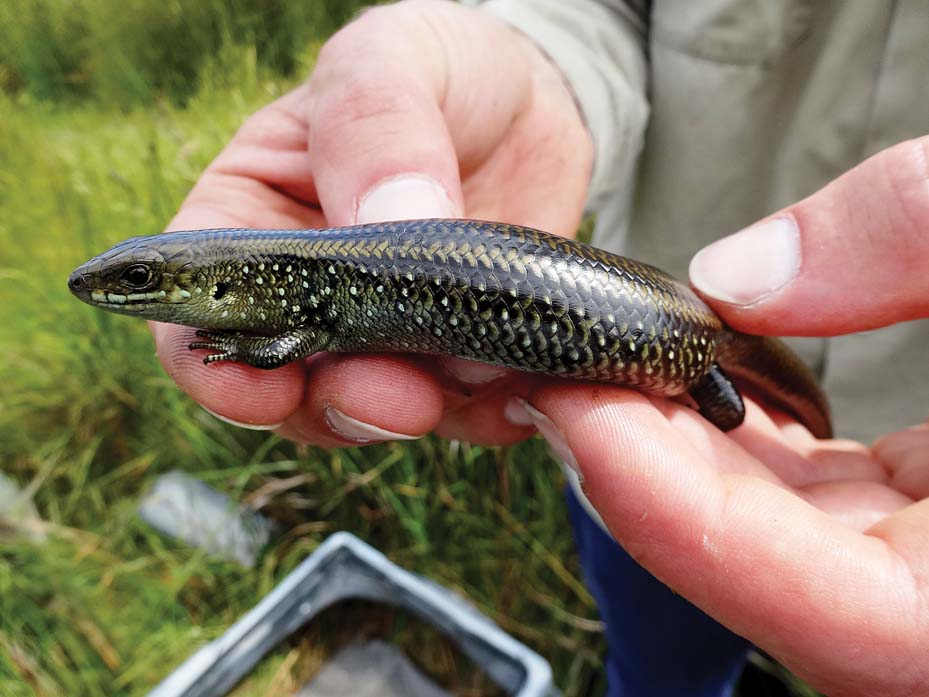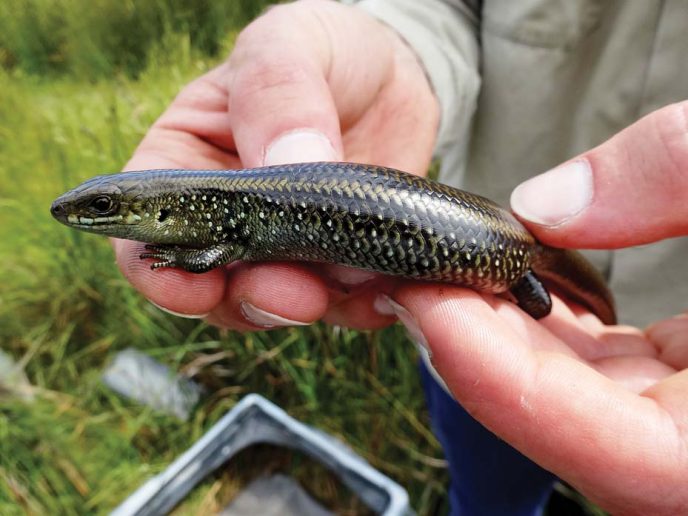
SEVERAL elusive swamp skinks have been rediscovered in parks on the Mornington Peninsula. A small team of scientists and field naturalists from La Trobe University rediscovered the skinks (Lissolepis coventryi) which have not been caught in the area for 30 years. The last anecdotal sighting was in 2012.
So far, 13 of these “mini Godzillas” have been measured and weighed after being caught in Elliott traps – which allow for live capture – and under tiles.
“Self-confessed reptile fanatics find swamp skinks appealing due to their fussy and secretive habits. They live in swampy areas and shelter in burrows. They display highly territorial behaviour and can be aggressive to unwanted visitors,” team leader David De Angelis, said.
The skinks are black and gold and have a blue mouth lining.
The scientists were creative in their efforts to observe the skinks: they installed low fences to create travel lines leading to surveillance cameras and baited their traps with honey, rolled oats, peanut butter and sardines.
Scientists also checked beneath hundreds of concrete roofing tiles left in the swampy areas the skinks prefer.
Continuing habitat loss is the biggest threat to this rare skink which is listed as threatened under the Flora and Fauna Guarantee Act. Its survival is also affected by weed invasion, inappropriate fire regimes and introduced predators, such as foxes and cats.
“This collaborative project between Parks Victoria and the Field Naturalists Club of Victoria is a rare opportunity for members of the public to assist with monitoring this state-significant species,” Mr De Angelis said.
“It is contributing to our knowledge of the swamp skink’s distribution on the peninsula and research into the most effective ways of surveying for it.”




